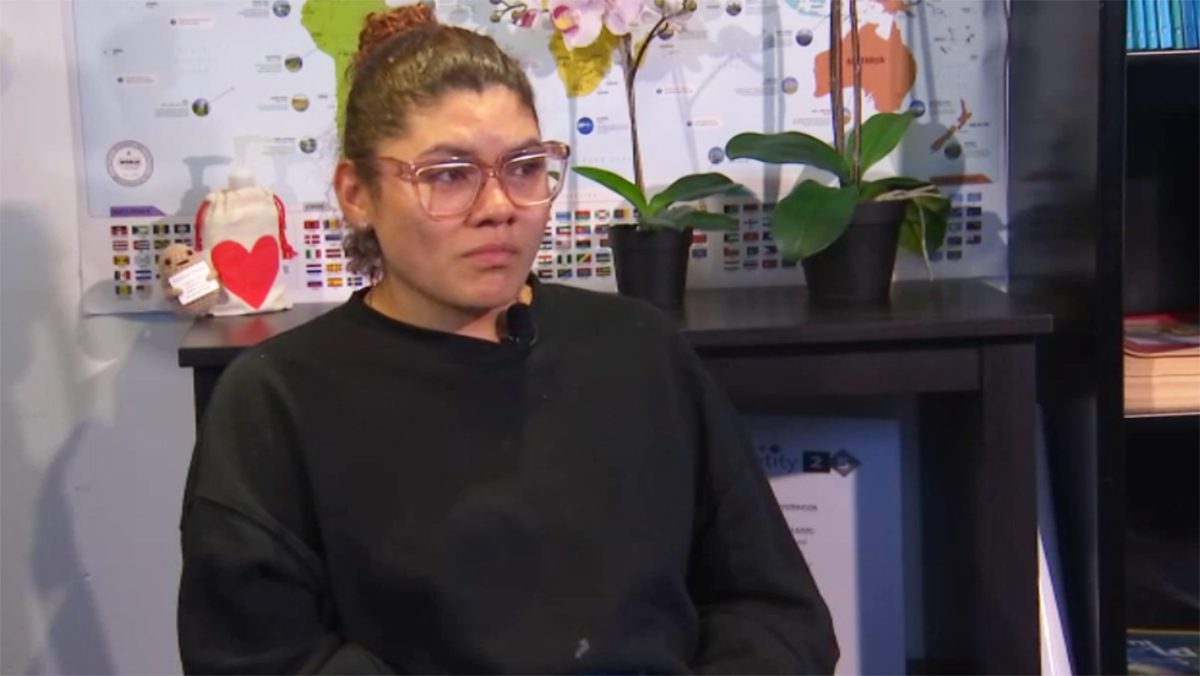This report is part of News4 and Telemundo 44’s Fighting Fentanyl series. Go here for full coverage.
Edith Montalvan bought a birthday cake for her daughter Ashleigh, but the teen wasn’t there to make a wish.
“I miss you so much. I miss you, baby. The house is not the same,” the Silver Spring mother said through tears.
Ashleigh died two years ago, at just 15. She was found in her bedroom after she accidentally overdosed on a drug laced with fentanyl.

“When I see her, I say, ‘Ashleigh, please, mami! Wake up!” Montalvan recalled.
Esteban López Cortés, of Laurel, copes with the heartbreak of fentanyl too. His daughter started using the drug at age 14. Despite treatment, she has relapsed three times, he said.
“I don’t see a future. You no longer have hope,” he said in Spanish.

Overdose rates in the Hispanic community nationally increased almost 290% from 2010 to 2021, according to a study published by the National Institutes of Health. Fentanyl was one of the top three drugs to blame. The synthetic drug killed almost 75,000 people in the U.S. last year, U.S. Centers for Disease Control and Prevention data says.
A memory of young teens cooking up fentanyl in Montgomery County
In Montgomery County, the nonprofit organization Identity offers free support to families with children addicted to fentanyl. Program Director Nora Morales has seen first-hand the chaos the drug creates in Hispanic families.
“I will never forget my first time doing street outreach. There was a group of maybe 12, 13-year-olds, and they were on the street, and they were cooking up fentanyl,” she said.
A 2023 report from the county’s health department says about 42% of emergency room visits for opioid overdoses were for Latino youth.
How trauma can relate to young immigrants’ drug use
Many of the affected families already grappled with other challenges and trauma.
“Those families have experienced a lot of loss,” Morales said. “When you add the immigration traumas, that is a recipe for a lot of isolation and depression, and so drugs seem very appealing.”
Some young immigrants are pushed to drugs as they seek relief from trauma they suffered in coming to the U.S., said University of Maryland professor Amy Lewin, who specializes in the study of family health.
"The journey overland that many of them went through to arrive in the U.S. was, in many, many of their cases, dangerous, threatening, full of deprivation and fear,” she said.
Even if the children themselves didn’t experience that hardship, what their parents went through can affect them.
“They still feel the weight of some of these things because their parents experienced it. So, we talk about this as intergenerational transmission of trauma,” Lewin said.
Barriers to care and how to break through
When immigrant families need help related to addiction or mental health, fear of possible legal consequences can be a barrier.
“This is a group that largely has less access to traditional mental health resources because of language barriers, because of income barriers, because of documentation barriers,” Lewin said.
That’s why Morales, of the group Identity, said it’s so important for parents to help their children find a safe space, especially if they’re new to the country.
“Help them find a club at school. Help them find a church group,” she said. “A lot of us who are immigrants, we left our communities behind. So, if you are an immigrant, create your community by bonding with your neighbors.”
She and others hope to battle the fentanyl crisis that’s devastating families in the D.C. area and around the country.

Montalvan, whose teen daughter died of an accidental overdose, said that two years after tragedy struck, she still struggles to understand that her child is gone.
“It’s very, very sad. Yes, it is hard. My heart is not accept what happened,” she said.
Some of the young people who the organization Identity works with in Montgomery County began using fentanyl when they were just 10 or 11 years old, Morales said.
She said she believes conversations about fentanyl and substance use need to begin in elementary school and middle school. If those lessons don’t come until high school, it may be too late.
If you need help for a young person struggling with fentanyl use in the D.C. area, many resources are available. Go here for information on how to find help.
Reported by Alberto Pimienta, produced by Ambar Rodriguez, shot by Lance Ing and Carlos Olazagasti, and edited by Jeff Piper




